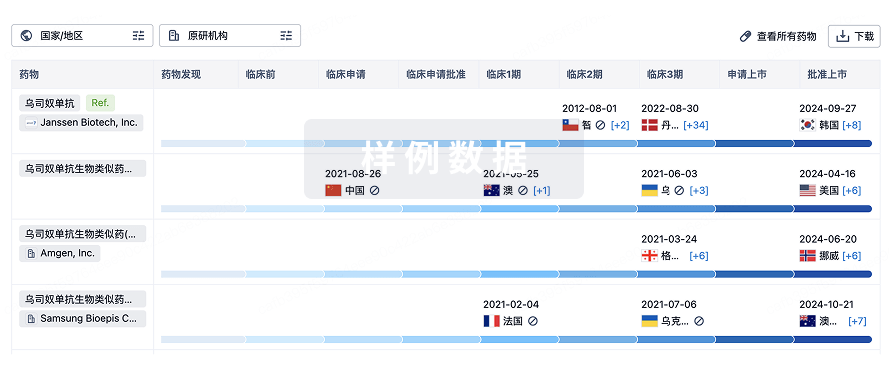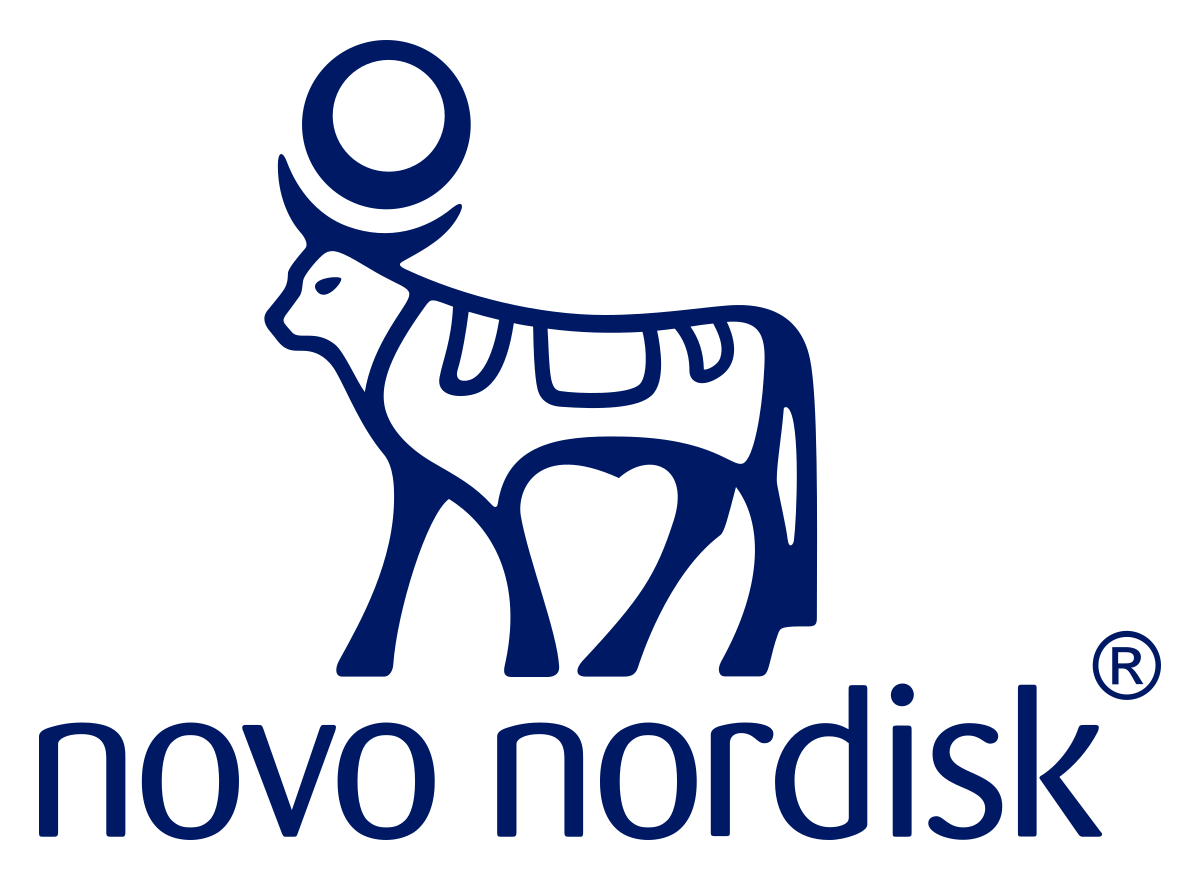预约演示
更新于:2025-12-02
NNC0519-0130
更新于:2025-12-02
概要
基本信息
药物类型 合成多肽 |
别名 NN-9541、NN0519 0130、NN9541 |
作用方式 调节剂、激动剂 |
作用机制 GIPR调节剂(肠抑胃肽受体调节剂)、GLP-1R激动剂(胰高血糖素样肽-1激动剂) |
治疗领域 |
非在研适应症- |
原研机构 |
非在研机构- |
权益机构- |
最高研发阶段临床1期 |
首次获批日期- |
最高研发阶段(中国)临床1期 |
特殊审评- |
登录后查看时间轴
关联
12
项与 NNC0519-0130 相关的临床试验NCT07004322
Investigation of Pharmacokinetics, Safety and Tolerability of Multiple Subcutaneous Doses of NNC0519-0130 in Male Chinese Participants With Overweight or Obesity
Novo Nordisk is developing a new study medicine NNC0519-0130 to improve the treatment options for people living with type 2 diabetes and excess body weight. In this study, the concentration of NNC0519-0130 in the blood will be measured and its safety will be evaluated. The participants will either get NNC0519-0130 or placebo (a "dummy" substance), which treatment the participants get is decided by chance. This study will test up to 7 different doses of NNC0519-0130 and will last for about 28 weeks.
开始日期2025-05-26 |
申办/合作机构 |
NCT06717698
Efficacy, Safety and Pharmacokinetics of NNC0519-0130 Once Weekly s.c. Versussemaglutide 1.0 mg and Placebo in People With Chronic Kidney Disease, With or Without Type 2 Diabetes, and With Overweight or Obesity: a Proof-of-concept and Dose-finding Study
The study evaluates the safety of different doses of a new medicine called NNC0519 0130. It also looks into how the medicine may improve kidney function in participants with chronic kidney disease with or without type 2 diabetes, living with overweight or obesity. The participants will either get NNC0519-0130 (a new medicine), semaglutide (a medicine that doctors can already prescribe), or placebo (a "dummy" substance). Which treatment the participant will get is decided by chance. The study will last for up to 43 weeks.
开始日期2024-12-02 |
申办/合作机构 |
NCT06718998
Evaluation of Different Dose Escalation Regimens for NNC0519-0130 in Participants With Overweight and Obesity
Novo Nordisk is developing a new study medicine NNC0519-0130 to improve the treatment options for people living with type 2 diabetes and people with excess body weight. This study will look at the safety and tolerability of NNC0519-0130. The purpose of this study is to investigate if different ways of increasing the dose of NNC0519-0130 in the main and extension phase can lessen the side effects that may occur when people take NNC0519-0130. There will be four different ways of increasing the dose of the study medicine and participants will get assigned to one of these - which one the participants get is decided by chance. This study will last for about 24 weeks.
开始日期2024-11-20 |
申办/合作机构 |
100 项与 NNC0519-0130 相关的临床结果
登录后查看更多信息
100 项与 NNC0519-0130 相关的转化医学
登录后查看更多信息
100 项与 NNC0519-0130 相关的专利(医药)
登录后查看更多信息
10
项与 NNC0519-0130 相关的新闻(医药)2025-08-06
Novo Nordisk has cut several programs the day before its new CEO begins.
The pipeline pruning could simply be a cost-cutting exercise, and arguably a necessary one following the company’s
profit warning
last week. But with some of the terminated assets being me-too products, it might also be an early glimmer of a strategic move toward more innovative research under
incoming CEO
Maziar Mike Doustdar.
Novo culled a GLP-1/GIP agonist despite its success in a Phase 2 obesity trial. The candidate, NNC0519-0130, shares a mechanism with Eli Lilly’s obesity shot Zepbound, which is outselling Novo’s Wegovy in the US. Novo said this decision was based on “portfolio considerations,”
according
to its second-quarter announcement Wednesday.
Another obesity asset was also shelved, partly because of its pharmacokinetics. Novo got hold of the CB1 blocker INV-347 through its
purchase of Inversago Pharma
for more than $1 billion in 2023. Another CB1 from Inversago, known as monlunabant,
disappointed
in Phase 2 last year but remains in development by Novo.
The Danish company also took a scythe to its FGF21 analog zalfermin following its failure in a Phase 2 MASH study. FGF21s are being developed by such companies as Akero Therapeutics, 89bio and GSK, and these have all posted positive mid-stage data. However, zalfermin remains in development at Novo in type 1 diabetes, and the company is beginning an “exploratory” Phase 1 study testing the shot with and without semaglutide.
An antisense product called CDR132L was also abandoned following a Phase 2 miss in patients with reduced left ventricular ejection fraction after myocardial infarction. Novo kicked off two Phase 2 trials of CDR132L in chronic heart failure instead. The asset was part of Novo’s acquisition of
Cardior Pharmaceuticals
in 2024.
Separately, a dyslipidemia product called ANGPTL3i was discontinued in Phase 1 on portfolio prioritization.
“We only advance pipeline candidates with differentiated clinical profiles that we believe can ultimately make a meaningful difference for patients with chronic diseases,” a Novo Nordisk spokesperson told
Endpoints News
.
Jefferies analysts wrote Wednesday that “there seems to be a larger R&D clean-out than usual but we do not know if this reflects a strategic re-assessment or just coincidence.”
Regardless of the rationale, with these assets out of the way, Doustdar has strategic decisions to make.
A shift away from me-too products like the GLP-1/GIP and the FGF21 would likely be welcomed by investors. Novo has always played to its cardiometabolic strengths, and a shift into other disease areas would be a surprise, the ongoing trial of semaglutide in Alzheimer’s disease notwithstanding.
Deals to refill the pipeline might be in the cards, though the disappointing outcomes with assets from the Inversago and Cardior deals suggest that more discernment in the choice of targets might be welcome.
“When it comes to R&D, we are committed to driving innovation across our core therapy areas and mak[ing] significant investments to advance our internal R&D pipeline, but also to complement these activities with external innovation through business development activities,” the spokesperson said.
“We look at the full spectrum of business development from early research agreements to late-stage assets. We will continue to do so, to keep providing improved treatment options for patients,” they added.
Novo said its Q2 sales were up 13% from the same time last year, reaching 76.9 billion Danish krone ($11.9 billion). Its net profit climbed 32% year-on-year to DKK 26.5 billion ($4.1 billion). However, its share of the US obesity market has slipped as Lilly gains ground and compounders continue to take a chunk out of Novo’s customer base.
The company filed 14 new lawsuits on Tuesday seeking to stop compounders,
alleging
that their activities are illegal, and steer patients toward “unapproved knockoff drugs under the false guise of personalization.”
Editor’s note: This article was updated to correct the quarterly earnings figures.
临床2期并购临床1期
2025-08-06
The day before Maziar Mike Doustdar officially begins his reign as CEO at Novo Nordisk, the company revealed alongside its second-quarter financial results a number of setbacks to its pipeline. These include two efforts in obesity, and one each in metabolic dysfunction-associated steatohepatitis (MASH) and dyslipidaemia.Having axed an experimental once-monthly dual GLP-1/GIP receptor agonist last year, Novo has now pulled the plug on efforts to develop a once-weekly therapy targeting the two receptors. The company said Wednesday that it completed a Phase II study of the GIP/GLP-1 co-agonist analogue, dubbed NNC0519-0130, in people with overweight or obesity in June. Although the primary endpoint of the trial was achieved, with NNC0519-0130 demonstrating statistically significantly greater body weight reductions compared with placebo after 36 weeks of treatment, Novo noted that it will not pursue further development "due to portfolio considerations."The company also disclosed the termination of work on INV-347, citing both portfolio considerations and the "pharmacokinetic profile" of the next-generation oral small molecule CB1 receptor blocker. The therapy was gained via the acquisition of Inversago Pharma in 2023, a purchase that earlier this year delivered a Phase II failure for the CB1 inverse agonist monlunabant (INV-202) in diabetic kidney disease.According to Novo, a Phase I study of once-daily INV-347 in participants with normal weight or overweight/obesity was completed in May. The company noted that while monlunabant had been associated with some mild-to-moderate neuropsychiatric side effects, INV-347 appeared to have a safe and well tolerated profile in the trial.Outside of obesity, Novo said that it terminated development of the long-acting FGF-21 analogue zalfermin (NNC0194-0499) in MASH due to portfolio considerations. A Phase II study in patients with MASH F2-F4, exploring a fixed-dose combination of zalfermin and semaglutide, was completed earlier this year.The drugmaker said that the trial failed to meet its primary endpoint of superior improvement in liver fibrosis and no worsening of MASH, compared to placebo.Meanwhile, work on ANGPTL3i in dyslipidaemia has been halted, again due to portfolio considerations. A Phase I study was completed in May, in which the monoclonal antibody appeared to have a safe and well-tolerated profile, but Novo has still ended work on the programme.
临床2期临床1期并购财报
2024-12-02
·医药健闻
跨国药企在中国重点资讯
文 | 苏丁
企业动态
拜耳
拜耳健康消费品携手美团医药健康共同举办“智享健康,聚力向新"战略合作研讨会,继双方2020年首次合作后,再次就核心渠道客户事业部的相关品牌达成战略合作。根据协议,未来双方将将围绕消费者需求,通过数据趋势洞察分析,在场景营销、用药指导、患教服务等方面开展全域合作。在提升药品可及性方面,双方将开展营销共建,加强新品首发合作力度,探索独家定制、联名发售等新型合作模式,借助美团HEALTH模型与工具,助力拜耳新品发布及全周期推广。双方也将结合美团医药数字化解决方案,高效链接连锁药店进行精准铺货,提升24小时药店及部分高需求地区的药品可及性。
赛诺菲
赛诺菲首次参展第二届中国国际供应链促进博览会,围绕“聚焦免疫领域的研发创新链”、“布局全中国的端到端运营价值链”、“共建医药健康全生态的中法合作链”三大亮点构建完整健康链路。赛诺菲展示了其在免疫学研究与治疗领域的深厚积淀与前瞻布局,并带来7款免疫领域的创新成果。中国市场是赛诺菲的第二大市场,赛诺菲在全国,特别是在华北、长三角、大湾区以及中部等重点经济区域。近期,赛诺菲中国与上药控股、凯辉基金、天境生物签署深化战略合作协议。
诺和诺德
诺和诺德连续第二年亮相链博会,展台面积扩大至450平米,展台设计风格以在华30年创新足迹为背景,全方位展示了“三大链条”——创新生态链、智能制造链、新质健康链。启动于2019年的“中国同创”项目在今年迎来了首个落地成果。全球首个胰岛素周制剂诺和期首次实现胰岛素“从日到周”的创新突破,以及国内外创新药半年内几乎“零时差”获批,让中国患者更早获益于全球创新药。诺和诺德还展示了多款创新药品及注射装置,覆盖糖尿病、肥胖症、罕见病等多个疾病领域。
阿斯利康
阿斯利康亮相第二届中国国际供应链促进博览会,通过制造供应链、新药创新链、产业生态链、创新出海链、可持续发展链5大板块全面展示深耕中国30多年来取得的成果。阿斯利康还携手阿里健康、默克、诺和诺德共同发起“医药企业药品流通资料电子化行动倡议”,通过将药品流通过程中所需的纸质资料进行合规的电子化,减少纸张消耗,助力低碳、高效、可持续医疗。中国红十字基金会阿斯利康乡村振兴公益基金宣布立项11个乡村健康项目,将惠及新疆、山西、吉林、内蒙古、黑龙江等11个基层单位。
富士胶片
上海理工大学医疗器械校外实践基地在富士胶片智慧医疗技术培训中心揭牌启用,同时展开为期三天的上海理工大学社会实践医疗影像设备科普培训。这标志着双方在人才培养和产教融合方面的合作进一步深化。通过将富士胶片在技术、产品和培训上的优势与上海理工大学的教育资源和人才优势相结合,共同打造一个集教学、培训、实践于一体的成长平台。
日本麒麟控股
日本麒麟控股(Kirin Holdings)将把子公司Kyowa Hakko Bio(协和发酵生物)的氨基酸业务等出售给中国的生物企业。出售额约为105亿日元。将出售的是氨基酸、母乳低聚糖(HMO)两项业务。2025年10~12月转让给中国生物巨头梅花生物科技集团。两项业务的营业收入2023财年约为240亿日元,占协和发酵生物整体的逾4成。其中,用于医药品和食品原料的氨基酸业务被视为主业之一。
勃林格殷格翰
勃林格殷格翰携手上海领养日在前滩太古里共同打造的首个领养猫咪对比故事展——“反转喵生”领养故事展及领养活动11月30日正式启幕。为期两周的展览将展出30组毛孩子从无依无靠到被爱后长出血肉的照片。展览通过讲述人宠相伴的温馨故事,鼓励社会各界共同倡导领养替代购买,全方位关爱宠物及宠主的身心健康,携手共建宠物友好型社会。此外,本次活动也致力于为近百只亟待寻找温馨新家的猫咪提供公益平台,帮助它们寻找爱心主人,共赴崭新生活。
产业动态
华领医药向拜耳医药保健有限公司发出书面通知,表示有意自2025年1月1日起,将公司开发用于治疗2型糖尿病的首创葡萄糖激酶激活剂华堂宁(多格列艾汀片)在中国的商业化责任过渡至公司。为实现过渡,公司有权并计划自2025年1月1日起终止协议。为支持华堂宁在中国的持续商业销售,公司可能会寻求其他潜在合作伙伴,以在中国进行华堂宁的商业化。华领医药与拜耳于2020年8月17日签署关于华堂宁的战略合作协议。截至目前,华领医药收到拜耳的里程碑款项合共已达到15亿元人民币。
辉瑞与华润医药商业集团有限公司正式签署战略合作协议,双方将充分发挥各自优势,共同推动针对肺癌与乳腺癌的四种优质的成熟药物—阿诺新(AROMASIN)、 爱博新(IBRANCE)、 法玛新(Pharmorubicin RD)、 赛可瑞(XALKORI)的商业化运营,拓展患者可及性。华润医药商业将充分发挥其覆盖广泛的市场体系和完善的分销网络优势,辉瑞将持续加码在肿瘤领域的投入,加速创新药物的研发和提供变革性的治疗方案。
诺和诺德(Novo Nordisk)1类新药NNC0519-0130注射液获得临床试验默示许可,拟开发治疗2型糖尿病。根据诺和诺德公开资料,这是该公司在研的每周一次皮下注射的双靶点GIP/GLP-1受体激动剂,正在国际范围内开展2期临床,用于2型糖尿病和肥胖人群。本次为该产品首次在中国获批临床。
CDE官网显示,诺华的盐酸阿曲生坦片在国内报上市,适应症为用于降低有疾病进展风险的原发性免疫球蛋白A肾病(IgAN)成人患者的蛋白尿,此前已纳入优先审评。阿曲生坦是一种在研的强效选择性口服ETA(内皮素 A)受体拮抗剂,ETA受体的激活会导致蛋白尿升高,这与IgAN中的肾脏损伤、纤维化和肾功能丧失有关。阿曲生坦有可能添加到目前的支持疗法中,以减少持续性蛋白尿并保护广大患者群体的肾功能。
阿斯利康申报的1类新药AZD5462片获得临床试验默示许可,拟开发治疗心力衰竭。根据阿斯利康官网资料,这是一款RXFP1激动剂小分子药物,目前在国际范围内处于2期临床研究阶段。通过CDE官网查询可知,这是该药首次在中国获批临床。
赛多利斯与云舟生物科技(广州)股份有限公司在广州签订战略合作协议,双方在基因载体、mRNA生物工艺解决方案等方面达成战略合作,共同助力和推动更多研发项目走向临床。云舟生物自成立以来一直致力于以创新推动基因递送技术的发展,其基因递送解决方案已赋能全球90多个国家和地区超4500家科研院校和制药公司中成千上万的科研人员。
联系美通社
+86-10-5953 9500
info@prnasia.com
免疫疗法
100 项与 NNC0519-0130 相关的药物交易
登录后查看更多信息
研发状态
10 条进展最快的记录, 后查看更多信息
登录
| 适应症 | 最高研发状态 | 国家/地区 | 公司 | 日期 |
|---|---|---|---|---|
| 2型糖尿病 | 临床2期 | 美国 | 2024-03-18 | |
| 2型糖尿病 | 临床2期 | 日本 | 2024-03-18 | |
| 2型糖尿病 | 临床2期 | 澳大利亚 | 2024-03-18 | |
| 2型糖尿病 | 临床2期 | 加拿大 | 2024-03-18 | |
| 2型糖尿病 | 临床2期 | 印度 | 2024-03-18 | |
| 2型糖尿病 | 临床2期 | 南非 | 2024-03-18 | |
| 2型糖尿病 | 临床2期 | 韩国 | 2024-03-18 | |
| 肥胖 | 临床2期 | 美国 | 2024-03-18 | |
| 肥胖 | 临床2期 | 日本 | 2024-03-18 | |
| 肥胖 | 临床2期 | 澳大利亚 | 2024-03-18 |
登录后查看更多信息
临床结果
临床结果
适应症
分期
评价
查看全部结果
| 研究 | 分期 | 人群特征 | 评价人数 | 分组 | 结果 | 评价 | 发布日期 |
|---|
No Data | |||||||
登录后查看更多信息
转化医学
使用我们的转化医学数据加速您的研究。
登录
或

药物交易
使用我们的药物交易数据加速您的研究。
登录
或

核心专利
使用我们的核心专利数据促进您的研究。
登录
或

临床分析
紧跟全球注册中心的最新临床试验。
登录
或

批准
利用最新的监管批准信息加速您的研究。
登录
或

生物类似药
生物类似药在不同国家/地区的竞争态势。请注意临床1/2期并入临床2期,临床2/3期并入临床3期
登录
或

特殊审评
只需点击几下即可了解关键药物信息。
登录
或

生物医药百科问答
全新生物医药AI Agent 覆盖科研全链路,让突破性发现快人一步
立即开始免费试用!
智慧芽新药情报库是智慧芽专为生命科学人士构建的基于AI的创新药情报平台,助您全方位提升您的研发与决策效率。
立即开始数据试用!
智慧芽新药库数据也通过智慧芽数据服务平台,以API或者数据包形式对外开放,助您更加充分利用智慧芽新药情报信息。
生物序列数据库
生物药研发创新
免费使用
化学结构数据库
小分子化药研发创新
免费使用
